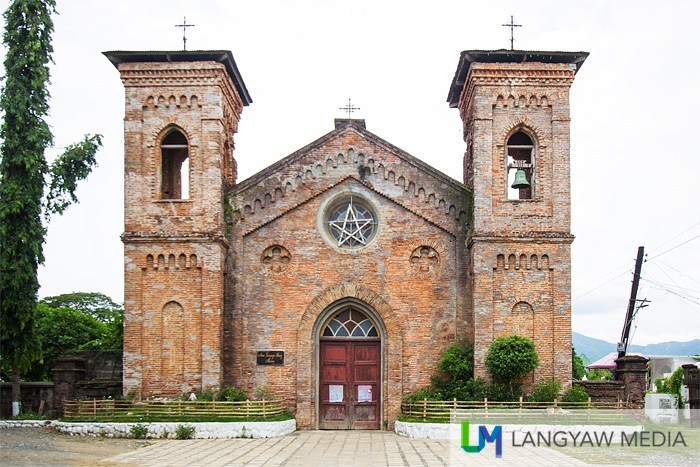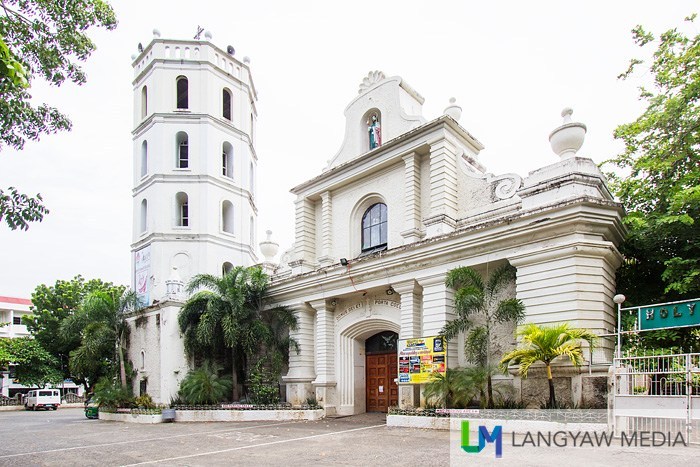Bangued, Abra
In 1598, the place now known as Bangued was occupied by the first Spanish-Iloco forces who established a garrison tp protect the Spanish missionaries from headhunters who frequently pillaged the settlement. The primary mission of the Spaniards was to christianize the natives and to locate the goldmines.
Historical records say that the word “Bangued” was an evolution of the word “Bangan” or roadblocks or blockades. Old people especially in the municipalities outside Bangued pronounce the word Bangued as Banged.
In 1692, Bangued was made an independent mission territory by the Augustinians under Pader Columbo. Earlier in 1615, Father Juan Pareja organized Bangued as a mission center and baptized 3,000 Tingguians with the help of Don Manuel Domaoal who was their chief.
The modern-day Bangued was formally organized in 1704 until it was decided to become the capital town of Abra in 1863.
The town fiesta of Bangued used to be celebrated every February. It was after the independence of the Philippines in 1946 when, as a gesture of nationalism, the newly installed local government of Bangued, through the leadership of the late Beato Alberto resolved to move the town fiesta to February 23rd. Even the Roman Catholic Church of Bangued whose patron saint is St. James the Greater and whose feast day falls on July 25, also observed February 23rd in honor of the good saint.
Before World War II, the town of Bangued was once a sprawling community of several sitios known then as Balliling, Linasin, Consiliman, Lallaud ( Camposanto), Gunggo-ngugong, Sinapangan, Barikir and Baraca. Almost all the Spanish homes were razed to the ground during the March 10, 1945 massive bombing of Bangued by the Allied Forcers.
The town of bangued long existed before it was formally inaugurated to coincide with the feast day of Saint James the Greater on July 25 in the year 1861.
There was no road that connected the town of Narvacan, Ilocos Sur with that of Bangued. It was the Abra River tributary that provided the principal means of transportation by bamboo raft (balsa) fron Caoayan, Ilocos Sur and from Banaoang, Ilocos Sur going upriver propelled by bamboo poles (tekkan) and oars (gaud). Rivermen or palmeros from different Ilocos towns settled for good in the towns of Bangued, La-Paz, Lagangilang, Dolores and Tayum.
Bangued has 31 barangays as follows: Agtangao, Angad, Bañacao, Bangbangar, Cabuloan, Calaba, Calot/Tablac, Cosili West, Cosili East, Dangdangla, Lingtan, Lipcan, Lubong, Macarcarmay, Macray, Maoay, Malita, Palao, Patucannnay, Sagap, San Antonio, Santa Rosa, Sao-atan, Sappaac, Zone 1, Zone 2, Zone 3, Zone 4, Zone 5, Zone 6 and Zone 7. Barangay Zones 1-7 constitute the Poblacion and are the only urban barangays of the municipality.
Historical records say that the word “Bangued” was an evolution of the word “Bangan” or roadblocks or blockades. Old people especially in the municipalities outside Bangued pronounce the word Bangued as Banged.
In 1692, Bangued was made an independent mission territory by the Augustinians under Pader Columbo. Earlier in 1615, Father Juan Pareja organized Bangued as a mission center and baptized 3,000 Tingguians with the help of Don Manuel Domaoal who was their chief.
The modern-day Bangued was formally organized in 1704 until it was decided to become the capital town of Abra in 1863.
The town fiesta of Bangued used to be celebrated every February. It was after the independence of the Philippines in 1946 when, as a gesture of nationalism, the newly installed local government of Bangued, through the leadership of the late Beato Alberto resolved to move the town fiesta to February 23rd. Even the Roman Catholic Church of Bangued whose patron saint is St. James the Greater and whose feast day falls on July 25, also observed February 23rd in honor of the good saint.
Before World War II, the town of Bangued was once a sprawling community of several sitios known then as Balliling, Linasin, Consiliman, Lallaud ( Camposanto), Gunggo-ngugong, Sinapangan, Barikir and Baraca. Almost all the Spanish homes were razed to the ground during the March 10, 1945 massive bombing of Bangued by the Allied Forcers.
The town of bangued long existed before it was formally inaugurated to coincide with the feast day of Saint James the Greater on July 25 in the year 1861.
There was no road that connected the town of Narvacan, Ilocos Sur with that of Bangued. It was the Abra River tributary that provided the principal means of transportation by bamboo raft (balsa) fron Caoayan, Ilocos Sur and from Banaoang, Ilocos Sur going upriver propelled by bamboo poles (tekkan) and oars (gaud). Rivermen or palmeros from different Ilocos towns settled for good in the towns of Bangued, La-Paz, Lagangilang, Dolores and Tayum.
Bangued has 31 barangays as follows: Agtangao, Angad, Bañacao, Bangbangar, Cabuloan, Calaba, Calot/Tablac, Cosili West, Cosili East, Dangdangla, Lingtan, Lipcan, Lubong, Macarcarmay, Macray, Maoay, Malita, Palao, Patucannnay, Sagap, San Antonio, Santa Rosa, Sao-atan, Sappaac, Zone 1, Zone 2, Zone 3, Zone 4, Zone 5, Zone 6 and Zone 7. Barangay Zones 1-7 constitute the Poblacion and are the only urban barangays of the municipality.


